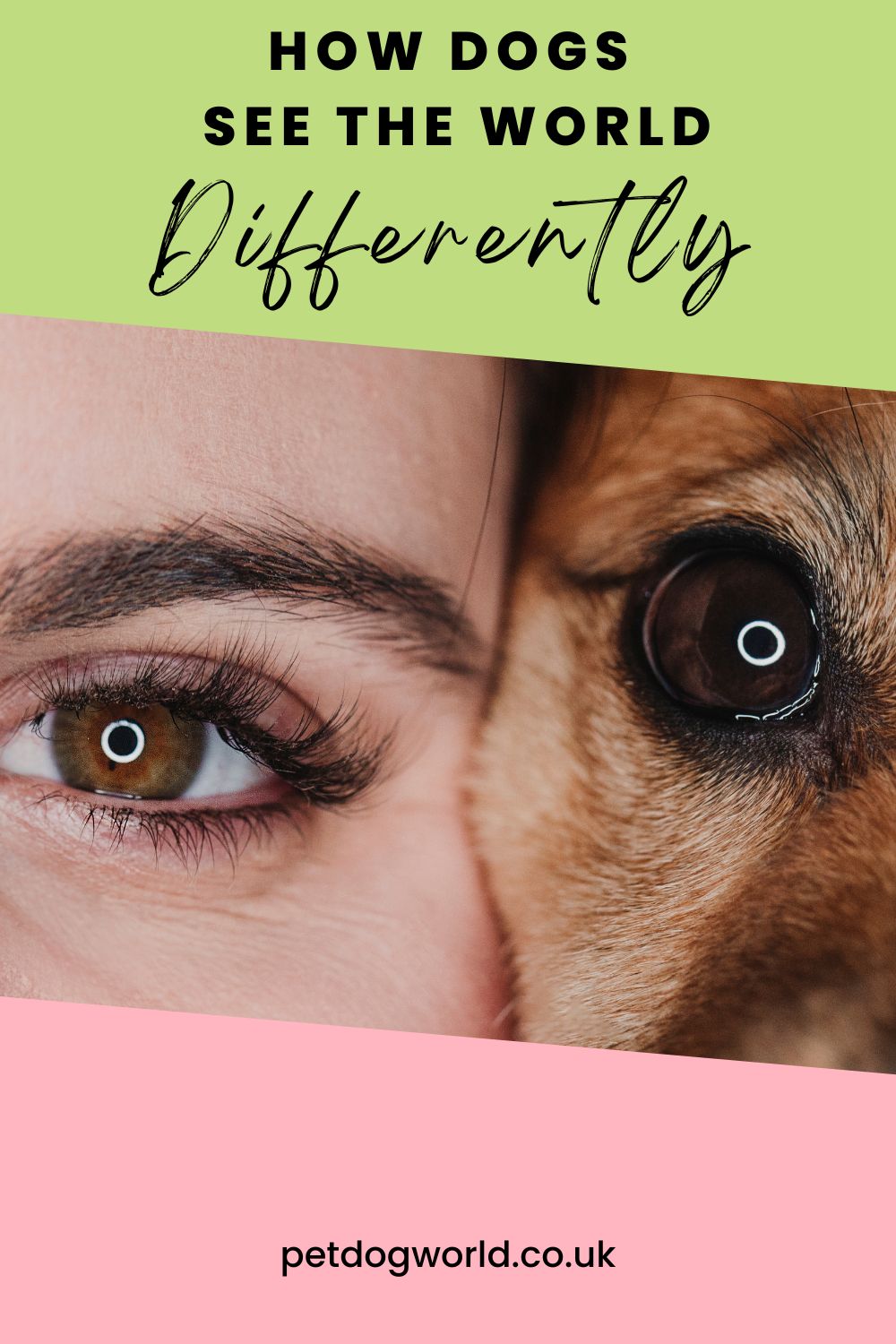When we gaze into our dogs’ eyes, imagining what they might be seeing in return is a wonder. As humans, we often tend to anthropomorphize our furry friends, thinking they see the world as we do. However, canine perception is a fascinating world of its own, involving different sensory capacities and a unique visual spectrum.

Do Dogs Only See in Black and White?
Firstly, let’s delve into colour perception. Despite common misconceptions, dogs’ vision isn’t limited to shades of black and white. Research has shown that dogs possess dichromatic vision, meaning they have two types of colour receptors (cones) in their eyes, unlike humans who have three.
Their colour spectrum revolves around shades of blue and yellow, whereas they struggle to distinguish between red and green, which likely appear as shades of grey.
Yet, even though their colour spectrum might be less vibrant than ours, dogs have a trump card in their visual perception: their sense of motion detection. This capability is a vestige from their wild ancestors, where tracking moving prey was essential for survival.
Consequently, dogs excel at noticing even the slightest motion in their peripheral field of view, making them excellent watchdogs.
How Good is a Dog’s Night Vision?
Light conditions also factor into how dogs perceive their environment. Dogs’ eyes are far more sensitive to lower light levels than human eyes. This enhanced night vision is partly due to a layer of tissue in their eyes called the tapetum lucidum, which reflects light back through the retina, effectively providing a second chance for the photoreceptors to catch the light.
Dog’s Senses
In addition to visual perception, it’s important to remember that dogs experience the world around them heavily through their sense of smell and hearing. A dog’s nose is a marvel of nature, capable of detecting scents up to 100,000 times better than humans.
This, combined with their ability to hear at a much higher frequency than us, gives them a highly nuanced understanding of their surroundings.
Finally, dogs are remarkably adept at reading body language. Their sharp sense of visual cues allows them to interpret the intentions and emotions of others. It’s one reason your dog seems to know when you’re sad or upset; they’re likely picking up on subtle physical signs that you may not even be aware you’re projecting.
Do Dogs Have Vision Problems Like Humans?
Dogs can suffer from similar eye conditions as humans, including myopia (nearsightedness), hyperopia (farsightedness), and other vision issues. However, these conditions are often harder to diagnose in dogs, as they cannot self-report visual issues like a human patient would.
Myopia, where distant objects appear blurry while nearby objects are clear, has been documented in certain breeds of dogs, such as Rottweilers, Miniature Schnauzers, and Toy Poodles. In contrast, hyperopia, where nearby objects are blurry while distant objects are clear, is less commonly reported in dogs.
Cataracts, or the clouding of the lens in the eye, is a common condition in dogs, especially as they age or if they have diabetes. Glaucoma, an increase in pressure inside the eye, is another condition seen in dogs and can lead to severe pain and blindness if not treated.
Regular veterinary check-ups are essential to monitor and maintain your dog’s eye health. If you notice any changes in your dog’s eyes or behaviour, such as squinting, excessive tearing, redness, or cloudiness in the eyes, or if they’re having trouble navigating familiar surroundings, it’s important to seek veterinary care promptly.
In conclusion
Although dogs may not see the world in the same colour spectrum we do, their perception is far from dull. Their highly developed senses of movement detection, low-light vision, smell, and hearing, coupled with their ability to read body language, provide them with a vivid and multidimensional perception of the world.
Understanding how dogs perceive their surroundings allows us to appreciate the richness of their experiences, offering us a glimpse into their unique and intriguing world.


